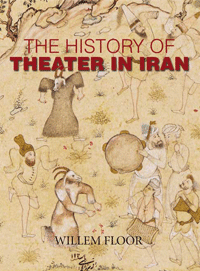 Eight candidates, 10
choices Eight candidates, 10
choices
In 1979, 98 percent voted yes to the IRI. What about 2005?
David
Etebari
June 17, 2005
iranian.com
Post revolution Iranian referendum of 1979 resulted
in a 98% popular vote for creation of an Islamic Republic, empowered
by a constitution
that gave the ultimate power to a non-elected Ayatollah as the
supreme leader. Today one more time Iranians were supposed to show
up at the voting poles, this time to select their new president.
A post that historically has been more of a ceremonial position
in comparison to the ultimate decision power of the supreme leader.
The unanimous vote for the Islamic republic and
unfulfilled promises of the religious and government officials
in Iran resulted in 26
years of isolation, inflation, prostitution, addictions, assassinations,
unemployment, war, imprisonment, torture and exodus as well as
the decay of the same religious beliefs that resulted in creation
of a failed theocratic system.
 For the past few years the Iranian oppositions have
been calling for a new referendum to decide, one more time, the
future form
of the government in Iran. A wish that would not be easily
granted to Iranians by those already in power. Therefore the opposition
groups invited all Iranians to turn this presidential election
to another referendum, this time against the Islamic Republic
by refusing to vote for anther powerless president. For the past few years the Iranian oppositions have
been calling for a new referendum to decide, one more time, the
future form
of the government in Iran. A wish that would not be easily
granted to Iranians by those already in power. Therefore the opposition
groups invited all Iranians to turn this presidential election
to another referendum, this time against the Islamic Republic
by refusing to vote for anther powerless president.
Selected
members
of the guardian council have approved 8 presidential candidates,
but Iranians are also aware of their 9th choice, a boycott
that
translates to a no vote for the Islamic republic. On the
other hand the Iranian regime, to maintain their internal and external
legitimacy, has been doing all it can to encourage voting. Iranians in their own way have converted this election
to a national referendum for another yes or no vote to the Islamic
Republic.
Today nearly 47 million Iranians, many of them under the
age
30 are eligible to vote. (To increase the number of votes,
the voting
age in Iran has been reduced to 15 years old). If more than
50% of the voters do not place their ballots in the boxes,
it would
be a clear indication that Iranians have changed their position
on the Islamic Republic system after their painful 26-year-old
lesson.
 However if the results are opposite and majority
of the eligible voters attend the presidential election, it is
obvious that
although the Islamic Republic no longer has 98% approval
rating but it
still has enough support among majority of Iranians. Therefore
those
who oppose the theocratic regime have no peaceful options
but to wait for more Iranians to learn from their lessons
in their
gradual
path to a secular democracy. However if the results are opposite and majority
of the eligible voters attend the presidential election, it is
obvious that
although the Islamic Republic no longer has 98% approval
rating but it
still has enough support among majority of Iranians. Therefore
those
who oppose the theocratic regime have no peaceful options
but to wait for more Iranians to learn from their lessons
in their
gradual
path to a secular democracy.
Many Iranians are anxiously waiting to see the result
of this election, not necessarily to find out who the next
president is, but to see
if the Islamic Republic receives enough votes of confidence.
Of course the Islamic Republic if needed has the 10th
option and that
is to take matters in to its own hands and find more
votes in the ballot boxes than were actually cast! Time will
tell...
|